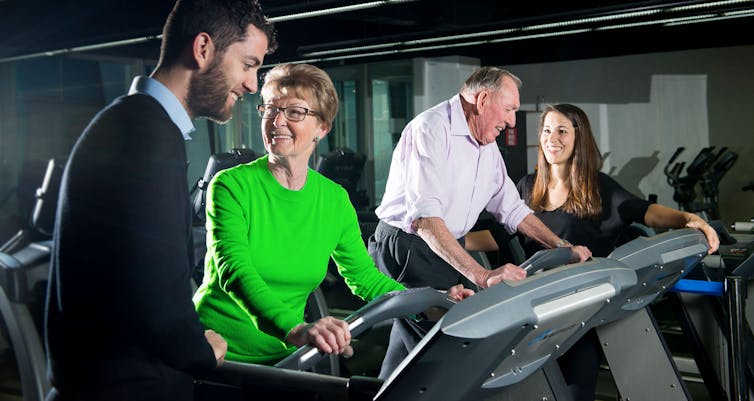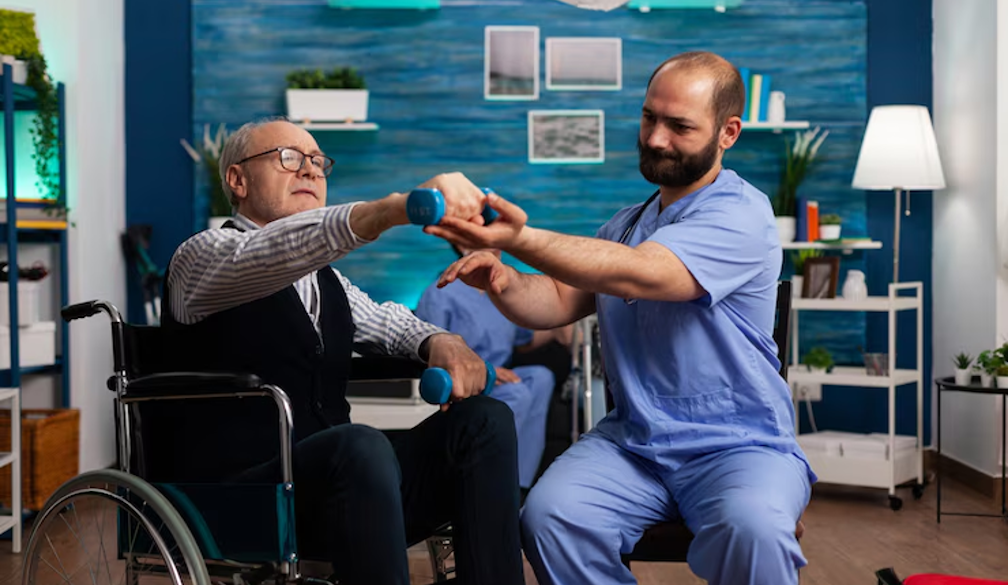Every cancer patient should be prescribed exercise medicine
- Written by Prue Cormie, Principal Research Fellow in Exercise & Cancer, Australian Catholic University
Every four minutes someone in Australia is diagnosed with cancer. Only one in ten of those diagnosed will exercise enough during and after their treatment. But every one of those patients would benefit from exercise.
I’m part of Australia’s peak body representing health professionals who treat people with cancer, the Clinical Oncology Society of Australia. Today we’re joining 25 other cancer organisations to call for exercise to be prescribed to all cancer patients as part of routine cancer care.
Published today in the Medical Journal of Australia, our plan is to incorporate exercise alongside surgery, chemotherapy and radiotherapy to help counteract the negative effects of cancer and its treatment.
Read more: Why exercise should be added to cancer treatment plans
What are we calling for?
Historically the advice to cancer patients was to rest and avoid activity. We now know this advice may be harmful to patients, and every person with cancer would benefit from exercise medicine.
Most doctors and nurses agree exercise is beneficial but don’t routinely prescribe exercise as part of their patients’ cancer treatment plan.
It is our position that all health professionals involved in the care of people with cancer should:
- view and discuss exercise as a standard part of the cancer treatment plan
- recommend people with cancer adhere to exercise guidelines
- refer patients to an exercise physiologist or physiotherapist with experience in cancer care.
Why prescribe exercise?
Cancer patients who exercise regularly experience fewer and less severe side effects from treatments. They also have a lower relative risk of cancer recurrence and a lower relative risk of dying from their cancer.
If the effects of exercise could be encapsulated in a pill, it would be prescribed to every cancer patient worldwide and viewed as a major breakthrough in cancer treatment. If we had a pill called exercise it would be demanded by cancer patients, prescribed by every cancer specialist, and subsidised by government.
Cancer and its treatment can have a devastating effect on people’s lives, causing serious health issues that compromise their physical and mental well-being.
Here’s why exercise is a new contender in the fight against cancer. TEDxPerth.Research shows exercise can help cancer patients tolerate aggressive treatments, minimise the physical declines caused by cancer, counteract cancer-related fatigue, relieve mental distress and improve quality of life.
When appropriately prescribed and monitored, exercise is safe for people with cancer and the risk of complications is relatively low.
Implementing exercise medicine as part of routine cancer care not only has the potential to change people’s lives but to also save money. People with cancer who exercise have lower medical expenses and spend less time away from work.
What exactly should be prescribed?
Exercise specialists can prescribe exercise in a similar way that doctors prescribe medications; by knowing how cancer impacts our health, and understanding how certain exercises improve the structure and function of the body’s systems.
Read more: Strength training can have unique health benefits, and it doesn't have to happen in a gym
These individualised programs involve specific types of exercises, performed at precise intensities and volumes based on a mechanism of action and dosage needed to counteract the negative effects of cancer.
The evidence-based guidelines recommend people with cancer be as physically active as their current ability and conditions allow. For significant health benefits, they should aim for:
at least 150 minutes of moderate intensity aerobic exercise weekly (such as walking, jogging, cycling, swimming)
two to three resistance exercise session each week involving moderate to vigorous intensity exercises targeting the major muscle groups (such as weight lifting).
These recommendations should be tailored to the individual’s abilities to minimise the risk of complications and maximise the benefits.
 Exercise is safe for people with cancer and can be tailored for the individual.
Photo Credit: Exercise Oncology Team at Australian Catholic University
Exercise is safe for people with cancer and can be tailored for the individual.
Photo Credit: Exercise Oncology Team at Australian Catholic University
How will patients fill the prescription?
Getting this much exercise may seem out of reach for many people with cancer. But exercise specialists who have experience in cancer care can help. They’ll design an individual program based on the patient’s disease, how they’ve responded to treatment and the anticipated trajectory of their health status.
Online directories can help find accredited exercise physiologists and physiotherapists practising nearby. These services are eligible for subsidies through Medicare and private health insurance.
Or patients can opt for structured cancer-specific exercise medicine programs such as EX-MED Cancer, which I lead. Such programs are designed to maximise the safety and effectiveness of exercise medicine for cancer patients.
Read more: A prescription for better health: exercise after prostate cancer
Authors: Prue Cormie, Principal Research Fellow in Exercise & Cancer, Australian Catholic University
Read more http://theconversation.com/every-cancer-patient-should-be-prescribed-exercise-medicine-95440



















